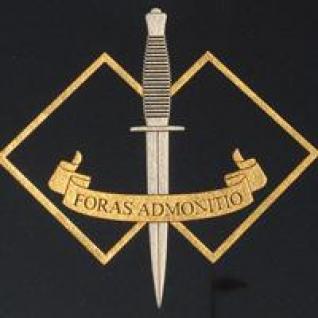History
The Raising of a Regular Battalion
On 18 January
1952, a Royal Australian Regiment Depot was raised as a training unit
for special establishment on the Order of Battle. The Depot was later
renamed 4 RAR on 10 Mar 52. This renaming was necessary because
Government approval had been given to raise a Battalion and not a
‘Depot’. The primary function of 4 RAR at the time was to train and hold
infantrymen for service in Korea. On 24 March 1960, the unit was
incorporated into the School of Infantry as ‘Depot Company, Royal
Australian Regiment’. The two units comprised resulted in the formation
of the Infantry Centre.
The political
decision to raise the fourth battalion of The Royal Australian Regiment
was made in 1963. Consequently, instructions for the raising of the
Battalion were issued on 13 January 1964. The official raising of 4 RAR
on 1 February 1964 was the first time a regular infantry Battalion had
been raised on Australian soil. Additionally, it was stated that this
battalion was a new battalion and not a resurrection of the old 4 RAR.
With the
reorganization of the Army during 1973 due to the cessation of National
Service, 2 RAR and 4 RAR were linked on 15 August 1973, to form 2nd/4th
Battalion, Royal Australian Regiment (2/4 RAR).
2/4 RAR was
charged with the task of preserving the traditions, associations,
museums and proprietorship of the two original battalions from which it
was formed until such time as the linking was annulled. Because of this,
all ranks of 2/4 RAR were aware of the history of both 2 RAR and 4 RAR
and jealously preserved these traditions, whilst working hard to
establish a distinctive image for their Battalion.
Between 1977 and
1979 2/4 RAR concentrated on conventional warfare including night and
mounted operations. On 1 July 1980, the unit was re-organized on light
scales and trained as part of the Operational Deployment Force (ODF) in
close country and conventional warfare operations.
On 1 Feb 82, with
the official replacement of the title 'Task Force' with 'Brigade', 2/4
RAR became a unit of the 3rd Brigade, 1st Division. The Battalion was
placed on operational readiness in 1987 and 1990. On each occasion the
Battalion was prepared to evacuate Australian citizens from Pacific
region countries experiencing civil disturbance.
From 1990 to 1993
many individual soldiers from the Battalion served with the United
Nations in Cambodia. In 1993, 54 soldiers from the Battalion were
detached to 1RAR for operational service in Somalia as part of Operation
Solace. In May 1993, 2/4 RAR was tasked to provide a Rifle Platoon for
Operation Gemini in Cambodia. 12 Platoon Delta Company, deployed to
Cambodia tasked with providing local security for Australian Army
Aviation Assets.
It was during the
Battalion's deployment to Rwanda on Operation Tamar in 1994, that the
Government made the decision to unlink the 2nd/4th Battalion. This was a
result of the 1994 Defence White Paper that identified the need for an
additional Infantry Battalion to enhance the Army's capability to meet
strategic guidance requirements. The 2nd/4th Battalion was unlinked by
the Chief of the General Staff, LTGEN J.C. Grey, AO on a parade at
Samichon Lines, Lavarack Barracks, Townsville at 1500 hrs on 1 February
1995.
The unit was renamed the 2nd Commando Regiment on 19 June 2009. According to Australian press,
"4 RAR began transitioning in 1996 when Government directed Army to
establish a second commando regiment with the ability to conduct special
recovery and strike operations. 4 RAR (Cdo) is now nearing maturity as a
special operations unit, and the name change to 2 Cdo Regt recognises
this achievement as well as the skills and qualifications of its
members."
"The name 2nd Commando Regiment was chosen as it
logically complements the existing 1st Commando Regiment, and also
reflects the unit’s historical links to the Australian Independent
Commando Companies that operated in the Southwest Pacific in the Second
World War.
2nd Commando Regiment will join the Special Air
Service Regiment, Incident Response Regiment, 1st Commando Regiment, the
Special Forces Training Centre and the Special Operations Logistics
Squadron as part of Army’s Special Operations Command ."
From Infantry Battalion to Special Forces
In 1996, a
decision was made to convert the Battalion to a Special Forces unit. On
1 February 1997, it was re-rolled to 4 RAR (Commando). Regular serving
members were given the opportunity to undertake special forces training
or elect a posting in a conventional unit. General Reserve positions
existed in the new structure and reserve members were discharged or
posted to GRes units.
The initial years
were busy creating a structure and recruiting members suitable for
commando training. Bravo Company was raised first followed by Charlie
Company in 1999, both taking 2-3 years to reach full maturity. The pace
of battalion life during these development years was hectic with
capability development, equipment acquisition and training, focusing
every member’s attention









